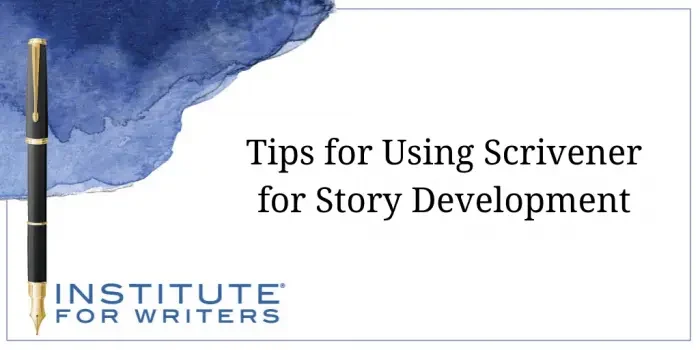1000 N. West Street #1200, Wilmington, DE 19801
© 2024 Direct Learning Systems, Inc. All rights reserved.

We teach our students how to write and get published!
View our Course Catalog >
Like many writers, I am aspiring to write the next great American novel. Well, actually, that might be a slight exaggeration. I just want to write a novel that is mine and that I can be proud of. I don’t even care about getting on the New York Times Bestseller list or making a ton of money; I just want to finally accomplish the goal I’ve been dreaming about since I was a little girl.
The only problem?
As it would turn out, writing a book is hard. And even more shocking, writing a book while having a full-time job and kids is even harder. I know, I know, who would have guessed, right?
To help get me organized and on task, many people have suggested that I try Scrivener. Always slow to adapt to change, I am wary of the learning curve to start using it. But I am slowly coming towards the Scrivener light and if you, too, are on the fence about using this book-writing application for your own story development, here are some tips to help us all get started together. (Here is the link for PC users. Here is the link for Mac users. These are affiliate links.)
Read the manual
Apparently, this in-depth program has an instruction manual that actually teaches how to use it. It’s a revolutionary idea, but I have to admit, it makes sense. Scrivener user Risa Nicole notes that it took her about 45 minutes to get through the instruction manual when she first used the program but that it provided a “great overview on everything.”
Just start writing
Another great way to get started with Scrivener is to just start. Don’t overthink it and just start playing around with it. The program does have a learning curve, but all of the converts I talked to swore that it’s totally worth it.
Check out the corkboard option
One of the most popular features of Scrivener is the storyboard feature, which allows you to create digital post-it notes to organize your story, plot points, and whatever other notes you want to throw in there. Writing a book can be so challenging because you may forget your plot twists, you might want to add something new, or, if you’re like me, you jump all over in your writing, so the storyboard corkboard option lets you see all of your story in one place. The Scrivener Coach has a great step-by-step course that teaches how to use this in-depth application.
Create character sketches
Any good story needs characters with back stories, right? Keeping track of those characters, however, can be a bit like a parent trying to control unruly children––they might be a little out of control. Scrivener lets you create detailed character sketches for your book, right down to images, likes/dislikes, hobbies, well, you get the picture. It might sound silly, but putting a “face” to the characters in your book might help you get to know them even more and you might be surprised what mischief they get into next in your story as a result! You can search YouTube for some great tutorials about how to create detailed character sketches that will advance your story.
Get organized from the beginning
The nice thing about Scrivener for story development is that it lets you have the two features of looking at the big picture of your story and the small details. If you set up large folders with sub-folders for each chapter, you will easily be able to hop into any chapter you want to work in. But then, when you want to look back and evaluate the entire plot, you can switch over to the storyboard view to quickly and easily move entire chapters around in a new structure.
Don’t worry about learning everything
Here’s the thing about Scrivener: it has a lot of features. That can be incredibly helpful, but it can also be incredibly overwhelming, especially if you’re a new user. Instead of worrying about learning every single feature before you start using the program, pick a few features that you think will be helpful to your particular goals, characters, and story, and go from there.
“You will find you will use certain aspects of Scrivener all the time and that you don’t need to know it all,” Nicole explains.
When it comes right down to it, Scrivener is merely a tool for your story and development, not something that you have to use in order to build your story. Don’t be afraid to choose a few of the basic features of Scrivener to help your story along and have fun making it work for you.
Chaunie Brusie is a labor and delivery nurse turned writer. She lives in Michigan with her husband, four young kids, and a flock of chickens. Find her at chauniebrusie.com.
1000 N. West Street #1200, Wilmington, DE 19801
© 2024 Direct Learning Systems, Inc. All rights reserved.
1000 N. West Street #1200, Wilmington, DE 19801
© 2024 Direct Learning Systems, Inc. All rights reserved.
1000 N. West Street #1200, Wilmington, DE 19801
© 2024 Direct Learning Systems, Inc. All rights reserved.

1000 N. West Street #1200, Wilmington, DE 19801
© 2025 Direct Learning Systems, Inc. All rights reserved.

1000 N. West Street #1200, Wilmington, DE 19801
©2025 Direct Learning Systems, Inc. All rights reserved. Privacy Policy.